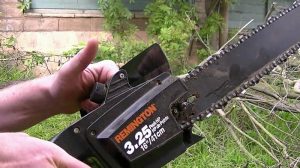
Gardening can be a rewarding and therapeutic activity, but having the right garden tools is crucial to make the experience enjoyable and efficient. Whether you’re a seasoned gardener or just starting out, selecting the right tools can make a significant difference in your gardening journey. In this article, we’ll delve into what you should consider when buying garden tools to ensure you make the best choices for your gardening needs.
Assess Your Gardening Needs
Before you rush to buy garden tools, take some time to assess your specific gardening needs. Are you a flower enthusiast, a vegetable gardener, or both? Do you have a small backyard garden or a larger plot of land? Knowing your needs will help you select the right tools tailored to your gardening style.
Quality Over Price
It’s tempting to go for the cheapest garden tools, but remember that quality matters. Investing in high-quality tools may cost more initially but will save you money in the long run. Durable tools will last for years and perform better, making your gardening tasks easier and more enjoyable.
Ergonomic Design for Comfort
Gardening can be physically demanding, so look for tools with ergonomic designs. Ergonomic handles and grips reduce strain on your hands and wrists, allowing you to garden comfortably for longer periods. Consider the weight and balance of the tools as well.
Material Matters
The material used in garden tools affects their durability and performance. Stainless steel and forged carbon steel are excellent choices for tools like spades, shovels, and pruners, as they are rust-resistant and can withstand tough tasks. For wooden-handled tools, ensure the wood is well-seasoned and treated to prevent splintering.
Consider Tool Length
Tool length matters, especially for tools like hoes and rakes. Longer handles provide more leverage, making it easier to work in larger areas. However, for precision work, shorter handles may be preferable. Choose tool lengths that suit your specific gardening tasks.
Versatility is Key
Look for tools that serve multiple purposes. For example, a versatile garden knife can be used for digging, weeding, and cutting. Multi-functional tools not only save you money but also reduce the clutter in your garden shed.
Check for Sharp Blades and Cutting Edges
Sharp blades and cutting edges are essential for efficient pruning and trimming. Dull tools can damage your plants and make your work more challenging. Ensure that your pruners, shears, and saws have sharp blades and consider investing in a sharpening tool.
Consider Storage Space
Think about where you’ll store your garden tools when they’re not in use. Some tools, like wheelbarrows and large rakes, can take up a lot of space. Make sure you have adequate storage space in your garden shed or garage for all your tools.
Handle Grip Comfort
The grip on your tools should be comfortable and slip-resistant. Look for rubber or foam grips that provide a secure hold, even in wet conditions. Comfortable grips reduce the risk of accidents and make your gardening tasks more enjoyable.
Warranty and Customer Reviews
Before making a purchase, read customer reviews and check if the tools come with a warranty. Reviews from other gardeners can provide valuable insights into the performance and durability of the tools you’re considering.
Consider Environmental Impact
As environmental concerns grow, you may want to consider the environmental impact of your tools. Look for brands that prioritize sustainability and use eco-friendly materials in their manufacturing processes.
Maintenance and Cleaning
Regular maintenance and cleaning are essential to prolong the life of your garden tools. Invest in a good-quality tool cleaning brush and keep your tools clean and well-oiled to prevent rust and corrosion.
Safety First
Always prioritize safety when using garden tools. Wear appropriate protective gear such as gloves, safety glasses, and sturdy footwear. Follow the manufacturer’s instructions for safe tool usage.
Store Your Tools Properly
Proper storage helps maintain the quality of your tools. Hang them on pegboards, use tool racks, or keep them in toolboxes to prevent damage and make them easily accessible when you need them.
Seek Recommendations from Fellow Gardeners
Don’t hesitate to ask experienced gardeners for their recommendations. They can provide valuable insights into which tools have worked best for them in various gardening situations.
Conclusion
Choosing the right garden tools is a crucial step in ensuring a successful and enjoyable gardening experience. By assessing your needs, prioritizing quality, considering ergonomics, and taking into account the factors mentioned above, you can make informed decisions when purchasing your garden tools.
Frequently Asked Questions (FAQs)
What are the essential garden tools every gardener should have?
The essential garden tools include a trowel, pruners, garden gloves, a rake, a shovel, a hoe, a watering can, and a wheelbarrow.
How often should I sharpen my garden tools?
It’s advisable to sharpen your garden tools at the beginning of each gardening season and as needed throughout the season to ensure optimal performance.
Can I use household tools for gardening?
While some household tools may work for basic gardening tasks, it’s recommended to invest in specialized garden tools designed for the job, as they are more efficient and durable.
What is the best way to clean and maintain garden tools?
Clean garden tools with a wire brush, remove rust, and oil the metal parts regularly. Wooden handles can be sanded and oiled to prevent splintering.
Are there any eco-friendly garden tool options available?
Yes, some brands offer eco-friendly garden tools made from sustainable materials. Look for tools with environmentally responsible manufacturing practices.





